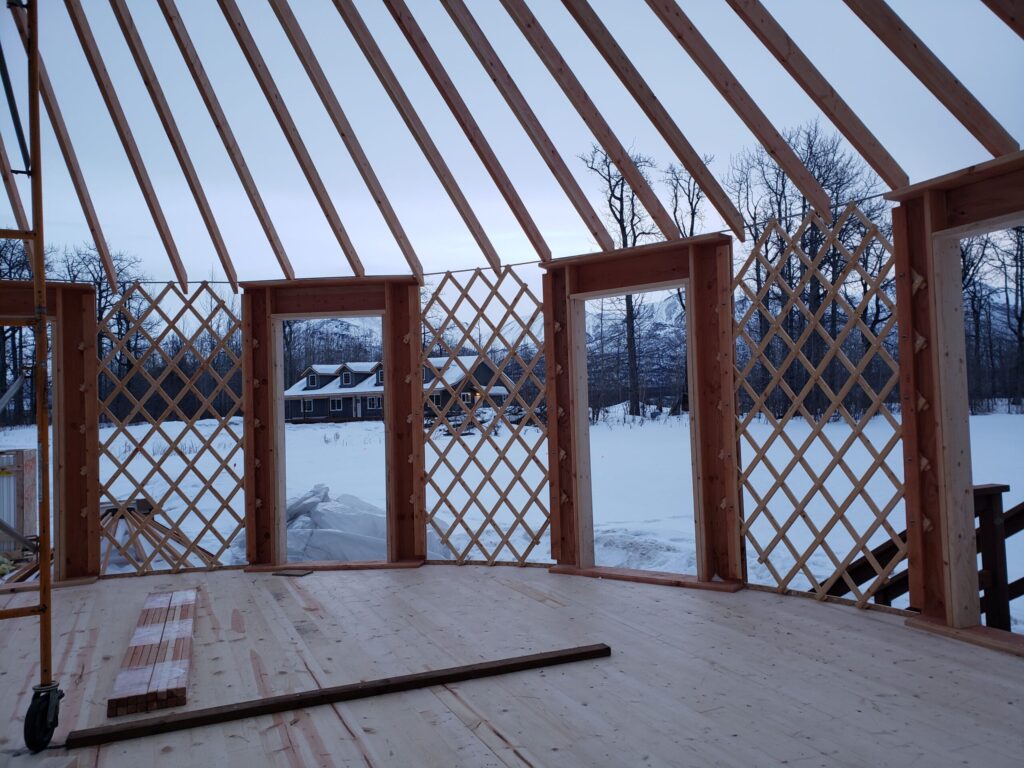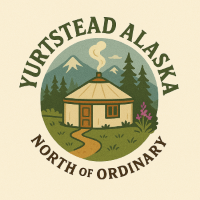Seven Second Version:
Self-sufficiency can build things. But community? Community builds lives worth living.
There’s a myth that thrives in rugged places like Alaska: if you’ve got grit, gear, and just enough stubbornness, you can do it all yourself.
And sure—self-reliance can build some impressive things.
But I’m learning that community builds the kind of life you actually want to live.
Stairs, Specs, and Small Regrets
After finishing the platform, we needed a safer way up than the frost-slick ladder that had already claimed its fair share of bruises. So my father-in-law and I got to work building a proper set of stairs. We debated how wide to make them. To save on cost and materials, I opted for the minimum: code compliant, structurally sound… but let’s just say, cozy.
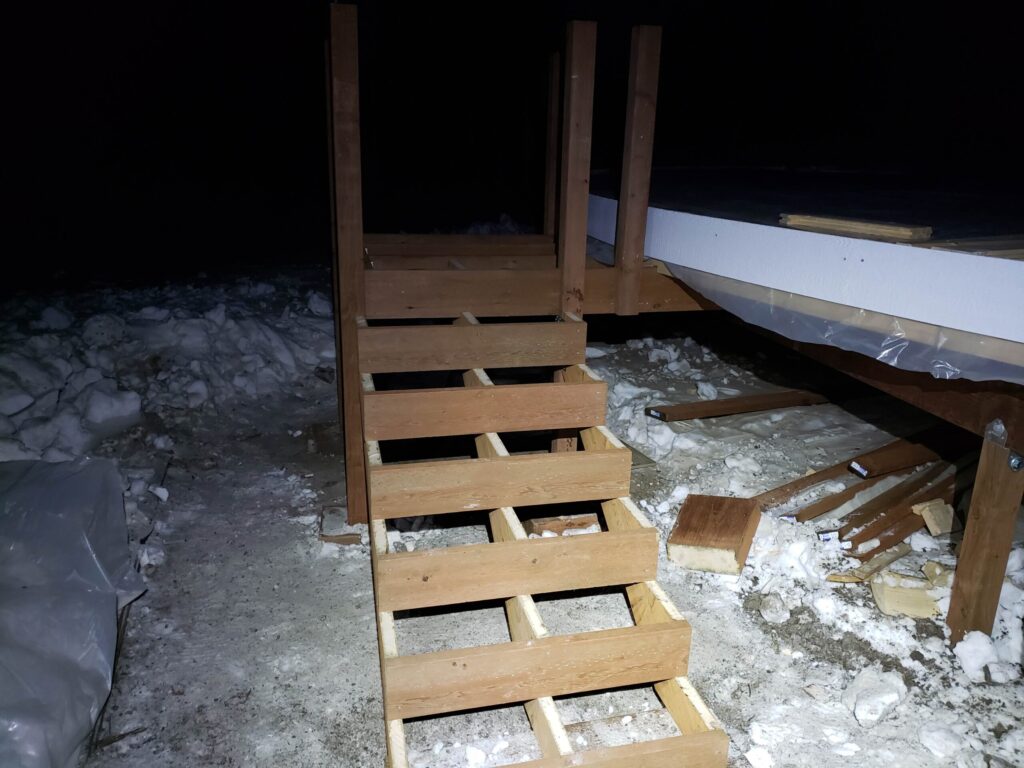
They worked great—until we had to carry everything inside.
That’s a future post called “How to Pivot a Couch Like a Penguin With a Hernia.”
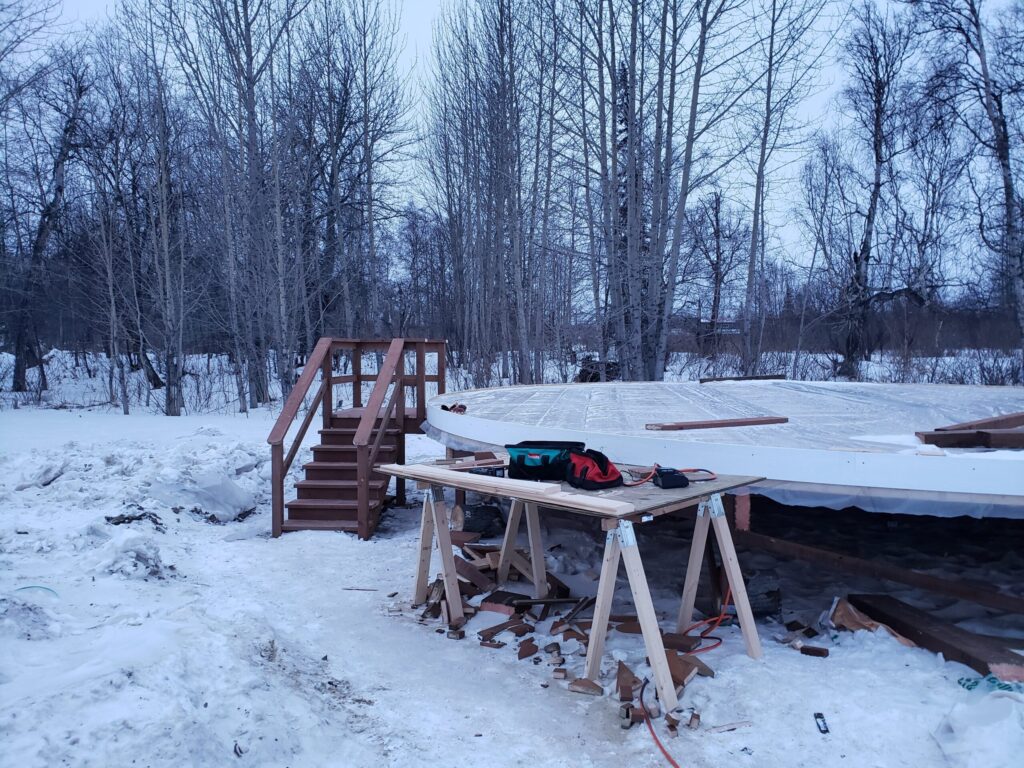
If IKEA Opened a Warehouse in Nome
When the yurt finally showed up—after multiple delivery delays—it brought all the charm of an IKEA build.
If IKEA shipped it to rural Alaska in the dead of winter… and forgot to include the manual.
The parts were all there. Neatly packaged, impressively engineered. But no diagrams, no step-by-step photos, not even a parts list. Just a bunch of heavy, frozen components and a whole lot of “Huh… maybe this goes here?”
Reverse engineering became our love language.
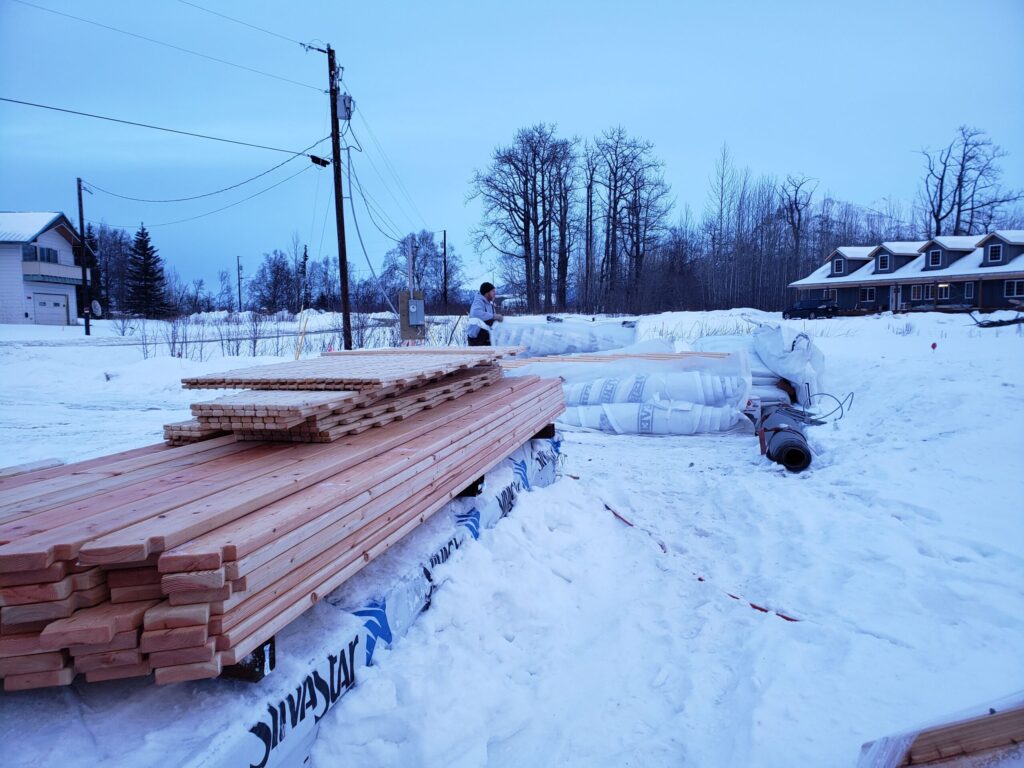
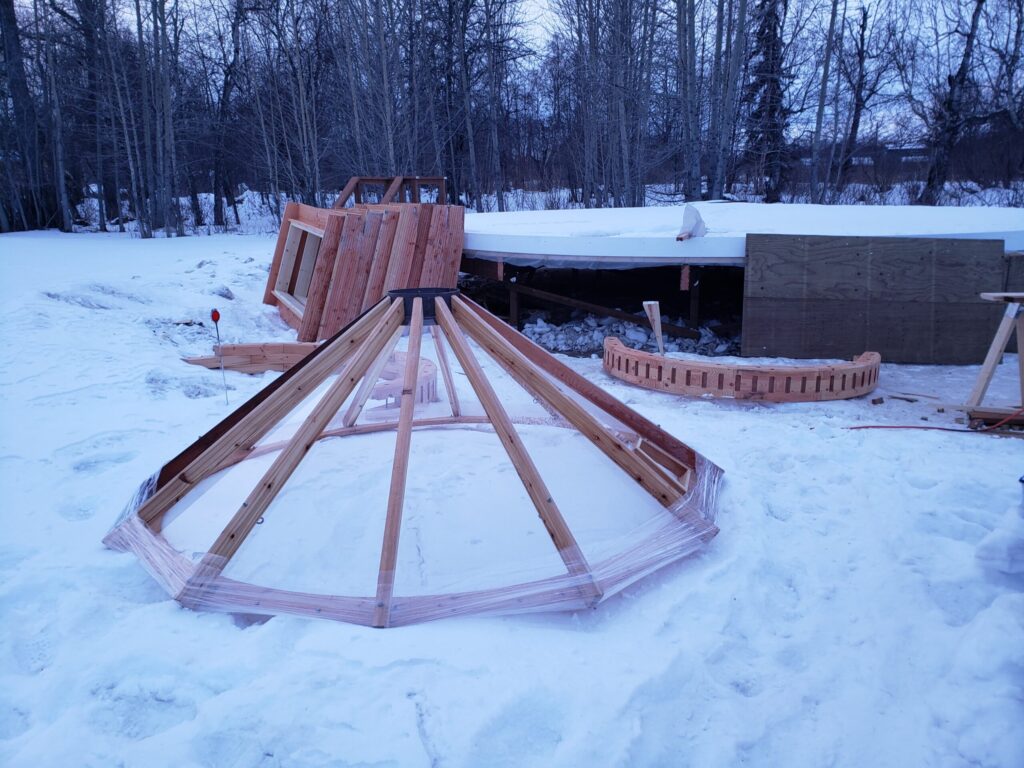
We started with what we could confidently identify: the window and door frames. Those at least had recognizable shapes. We stood them upright on the platform, where they towered in isolation—like ancient monuments awaiting purpose.
We named it Alaskan Stonehenge.
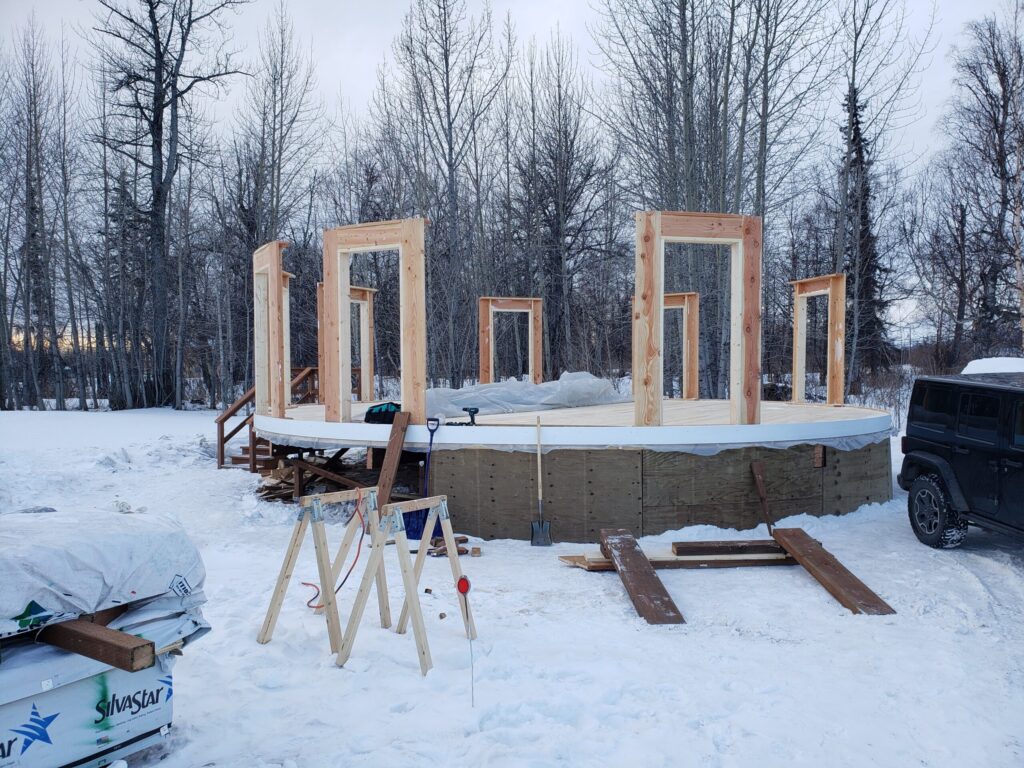
We didn’t even know if we were supposed to screw them down or just let the yurt hold them in place. But being the builders we are—and with my newfound affection for structural lag screws—I decided to secure them.
And I secured them real good.
The Big Plan (and the Bigger Reality Check)
We rallied our community—friends, church family, generous neighbors—basically anyone willing to trade a warm Saturday for a cold story about helping a determined guy with questionable timing put up a yurt in the dead of winter.
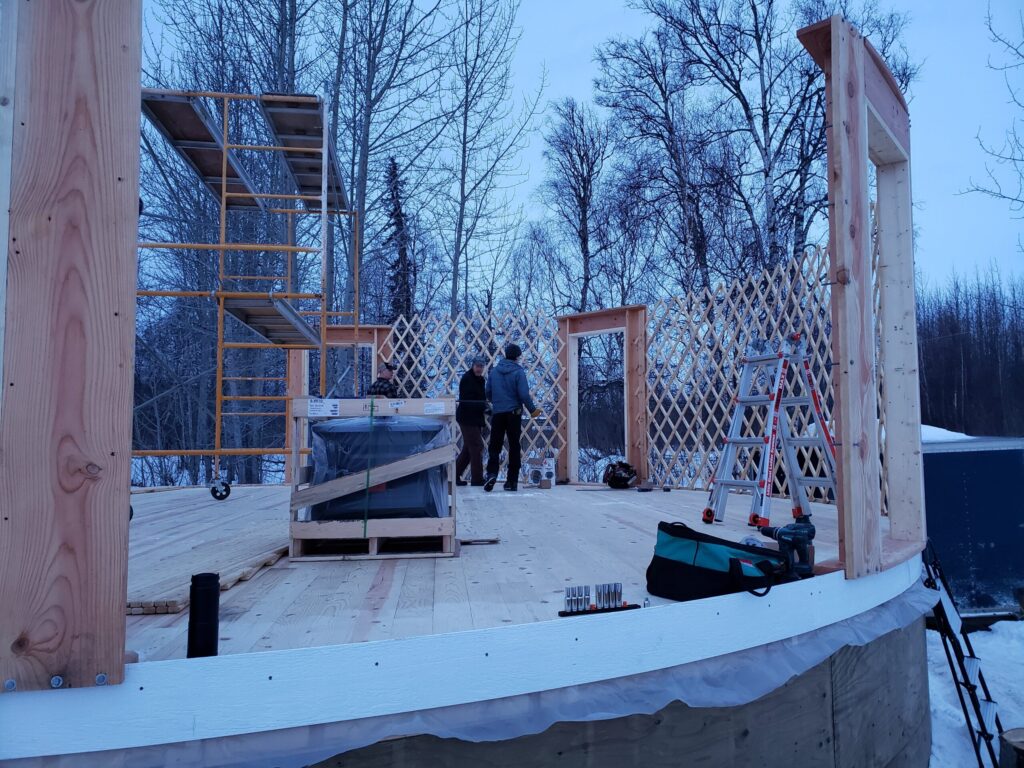
The plan?
- Finish setting the wood lattice.
- Raise the 400-lb center ring and slot in the rafters.
- Start wrapping it all with the roof and wall material.
That material? Duro-Last vinyl—the kind used for modern ocean-going sailboat sails. Built to last. Built to take a beating.
Not built to be pliable when it’s 2°F and cold enough to freeze your nose hairs.
We had so much help, we couldn’t keep everyone in jobs. I found myself running around like a snow-booted orchestra conductor whose entire band brought their own instruments and decided to play improvisational jazz.
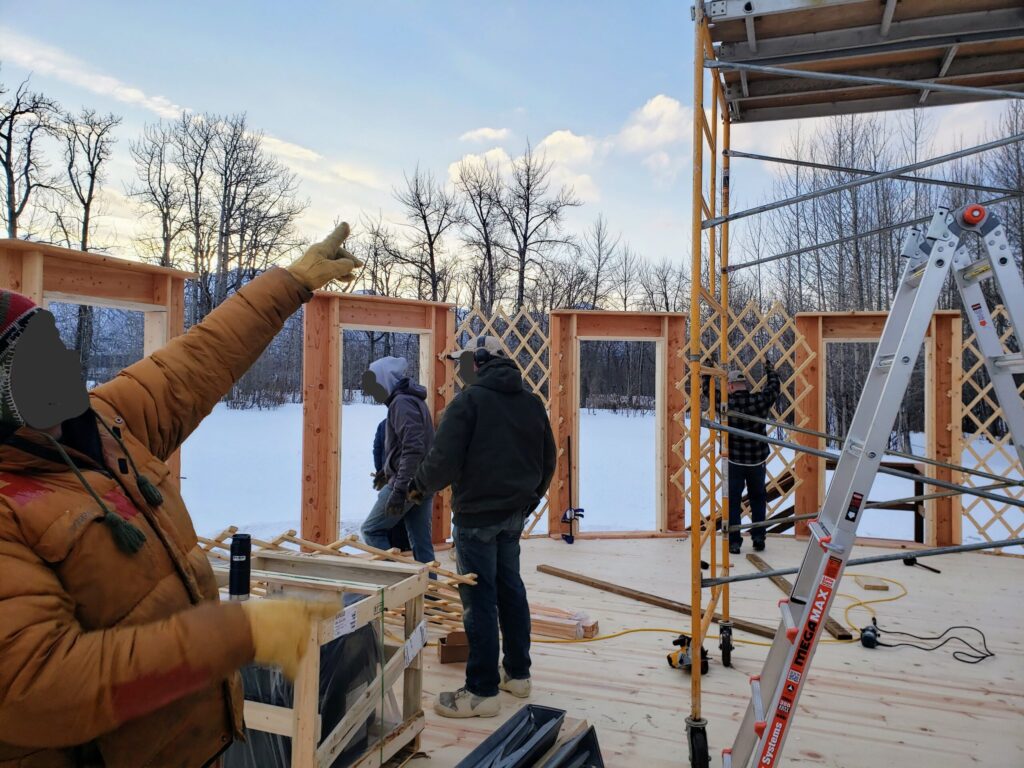
We didn’t get as far as we’d hoped. But we got way farther than we could have on our own.
Trouble with the Lattice: Leveling the Walls of a Yurt
Even before we got to the vinyl, we hit our first snag: the lattice walls.
They were supposed to be the same height all the way around. But no matter how we adjusted—shifted, stretched, repositioned—something was always off. So I ran some numbers, consulted one of the master carpenters who had come to help, and together we made a plan: trim the ends of each lattice section just enough to get them to open evenly.
Our math, sketched on the back of a 2×6 off-cut, actually worked.
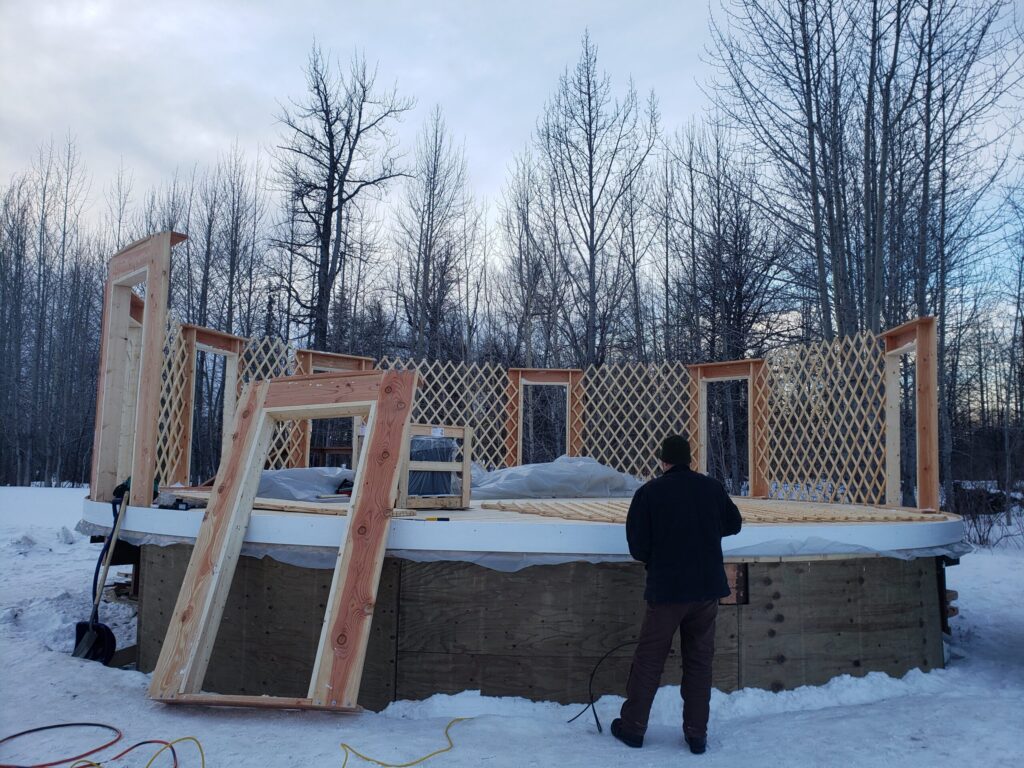
The only reason we even knew they needed to line up that precisely was because I remembered a comment the yurt maker had casually mentioned on a phone call. I jotted it down immediately—because when you’re flying blind, any shred of clarity is something you hold onto.
Months later—after everything was already up—I called the builder with a totally unrelated question… and learned that the lattice had been engineered to work perfectly if you assembled each section in a very specific order and way.
Would’ve been nice to know. But hey—we got it done. A little improvising, a little teamwork, a little sawdust… and the yurt kept going up.
The Crown Ring Circus
And then there was the 400-lb center ring.
We knew it needed to be elevated. We just didn’t know how elevated.
So we did what any totally OSHA-unapproved crew would do—we started stacking. First the sawhorses, then a sheet of plywood—on top of the scaffolding. At a certain point we realized we weren’t building a platform—we were building a liability.
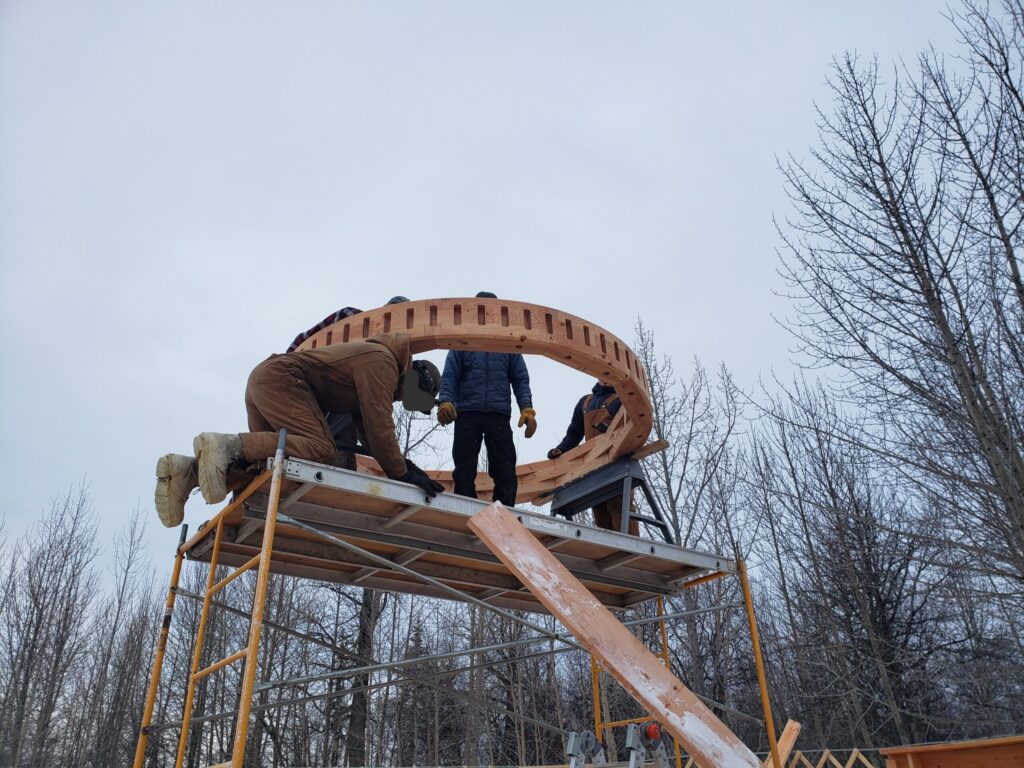
Which is how I ended up standing on top of the plywood, on top of the sawhorses, on top of the scaffolding, gently waving in the breeze, and calling the yurt company.
“Hey, quick question—how high is this ring supposed to be?”
They replied, chipper as ever: “Oh yeah, exactly 14 feet 6 inches.”
Perfect. Just the kind of detail that would’ve been great before I took a phone call from 13 feet in the air, questioning all my life choices.
But with a little faith, a lot of teamwork, and no shortage of risk tolerance, we got the ring in place and started feeding in rafters until the whole thing could hold itself.
What Got Built (Spoiler: It Wasn’t Just a Yurt)
We didn’t finish as much as we hoped. The vinyl fought back. Tools froze. Fingers went numb.
But that day built more than a structure.
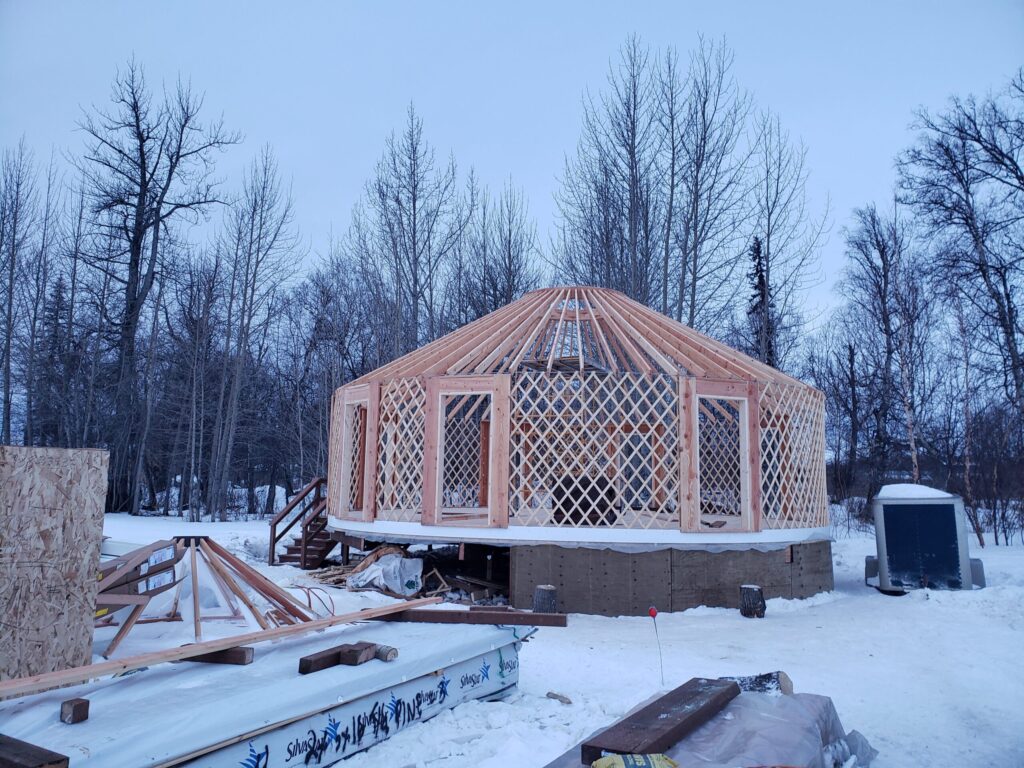
A neighbor opened their home so we could warm up. Friends stood out in the cold without complaint. Our kids chased each other between walls that didn’t exist yet, believing—without being told—that something solid was taking shape.
There’s something about building with other people that doesn’t just put up walls—it breaks them down.
We didn’t just build a platform for a yurt. We built connection. We built shared memories. We built trust. The kind of trust that comes from solving problems side by side when things don’t go as planned—which is most of the time out here.
Self-sufficiency is tempting. It’s efficient. It feels like control. But it rarely leaves room for joy, for laughter in the cold, or for someone to say, “Hey, I’ve got you.”
That day reminded me: self-reliance can build things. But community builds lives worth living.
And if we’re going to build something north of ordinary, know we don’t have to do it alone.
